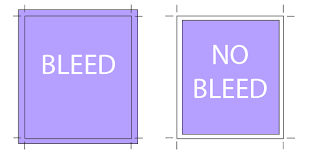Uncategorized
What is Bleed?
Bleed is a crucial aspect of print design, often overlooked but essential for achieving professional-quality results. In the realm of printing, bleed refers to the extension of artwork or images beyond the edge of the finished document. This additional margin ensures that when the document is trimmed to its final size, there are no white edges or unwanted borders.
Why is bleed necessary? In printing, slight variations can occur during the cutting process. Without bleed, even the slightest misalignment could result in unsightly white borders along the edges of the printed piece, detracting from its overall appearance. Bleed acts as a safety margin, allowing for these variations while ensuring that the design extends seamlessly to the edge of the page.
For example, in a business card design, bleed ensures that colors and images extend all the way to the card’s edge, creating a clean and professional look. Similarly, in brochures, flyers, or posters, bleed ensures that graphics and backgrounds appear continuous and uninterrupted.
When preparing print files, it’s essential to include bleed to avoid any unwanted white margins or trimming errors. Typically, printers require a bleed of around 3mm to 5mm to accommodate trimming variations effectively. By incorporating bleed into print designs, designers can guarantee a polished and professional end result that meets the highest standards of quality.


